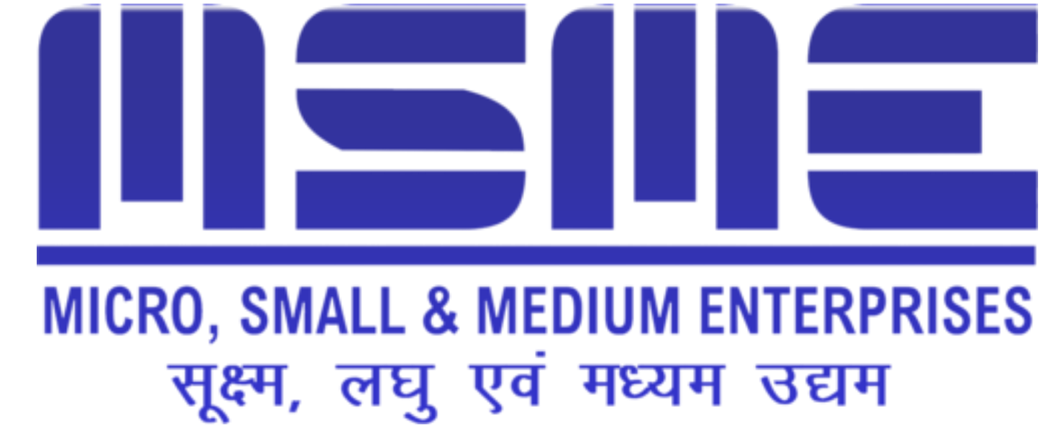Background
MSME stands for Micro, Small and Medium Enterprises. In a developing country like India, MSME industries are the backbone of the economy.
The MSME sector contributes to 45% of India’s Total Industrial Employment, 50% of India’s Total Exports and 95% of all industrial units of the country and more than 6000 types of products are manufactured in these industries. These industries are also known as small-scale industries or SSI’s.
Statutory
Provision related to MSMEs
With a view to boost the development of small enterprises in the country, the Government of India has enacted “Micro Small and Medium Enterprises Development (MSMED) Act, 2006 and set up a separate Ministry of Micro Small and Medium Enterprises, which came into force w.e.f. 02.10.2006.
Classification of MSMEs
- Earlier scenario (till 13th May 2020): Classification of MSMEs have been done based on investments in plant and machineries.
MSME are classified into two categories:
- Manufacturing enterprise; and
- Service enterprise.
| Classification | Micro | Small | Medium |
| Manufacturing Enterprises | 25 lakhs | less than 50 lakhs | less than 1 cr. |
| Service Enterprises | less than 10 lakhs | less than 20 lakhs | less than 50 lakhs |
- Current Scenario (from 14th May 2020): Classification of MSMEs have been done based on investments in plant and machineries and Turnover and now there is no distinction between manufacturing enterprise and service enterprises.
| Classification | Micro | Small | Medium |
| Manufacturing & Services enterprises | Investment less than 1 cr. and Turnover less than 5 cr. | Investment less than 10 cr. and Turnover less than 50 cr. | Investment less than 20 cr. and Turnover less than 100 cr. |
Registration Process
The entire registration process for MSME have been made very simple and self-declaration basis. Applicant should visit www.udyogaadhaar.gov.in and following information should be kept ready before filing of registration e-form: –
- Mobile No. & valid E-Mail ID of applicant.
- Aadhar Number & PAN number.
- Office Address.
- Bank account details of applicant
- Investment in Plant & Machinery above information will be helpful in easy filling of online e-form and after submission of form, Udhyog Aadhar Memorandum (UAM) certificate will be generated.
Pros of being MSMEs
- 50% Subsidy on Patent Registration if MSMEs have created something new (Product/models etc.)
- MSMEs will get collateral free loans for running their businesses.
- MSMEs will get exemption of interest on Overdraft if they have good credit history and have good relations with their banks.
- Central government has reserved the purchase of more than 350 products exclusively from this sector.
- The government helps MSME to upgrade their equipment through latest technology by helping them get low-interest loans from banks.
- MSMEs will get protection against payments from buyer (i.e. buyer will pay within 45 days) irrespective of agreement between them.
Cons of being MSMEs
- MSME have more difficulties to find funding as they do not have the financial power that large companies have
- It may be difficult to reach many customers and earn their trust.
- SMEs will have enormous impediments to benefit from the economy of scale, which will cause costs to be higher in certain types of business.
- d. Despite being more flexible in dealing with changes, the lack of financial capability can cause major problems for an SME if it is forced to endure long periods of crisis.
- MSME have low bargaining power with suppliers and customers.
- MSMEs have limited Access to skilled personnel.
Relief provided to MSMEs due to Covid-19 pandemic
- Collateral-free automatic loan which have 4 years tenor with moratorium of 12 months on principal repayment.
- Subordinate Debt for Stressed MSMEs to be provided.
- Equity infusion for MSMEs with growth potential through fund of funds model.
- Definition of MSME to be revised to increase investment and turnover limit to expand the coverage (already discuss in classification of MSME).
Conclusion
To conclude, the MSME sector of India is today at the gateway of global growth on the strength of competitive and quality product range. However, facilitation from the Government is required to minimize the transaction costs of technology upgradation, market penetration, modernization of infrastructure etc. The MSME sector has often been termed the ‘engine of growth’ for developing economies. We begin with an overview of this sector in India and look at some recent trends which highlight the development and significance of this sector vis-à-vis the Indian economy. The factors like export promotion, reservation policy, tooling& technology, manpower training, technology and managerial skills gave enormous opportunities for growth and better performance in the economy. It is concluded that MSMEs in the Indian Economy have shown tremendous growth and excellent performance with the contribution of policy framework and efficient steps which had been taken by the government time to time for the growth and development of the MSMEs.

